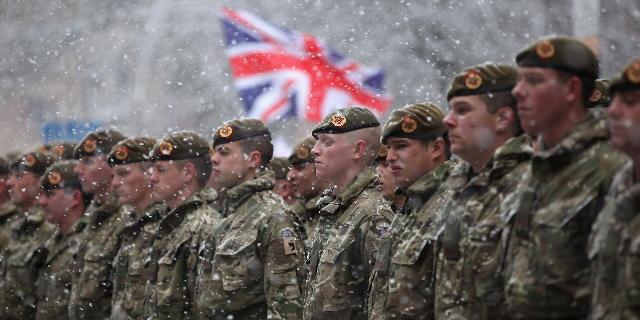The Sun: London assesses its military potential for confrontation with Moscow
The head of the British army thinks that London has a chance to withstand an armed conflict with Moscow, as David was able to withstand Goliath, writes The Sun. However, even Bible stories won't help the British. The reality is that their army is not even a breakfast for the Russian elite military.
Jerome Starkey
The head of the British army described a new three-stage combat system, in the center of which are soldiers protected by two outer rings of robots and drones with artificial intelligence.
Former head of the SAS (Special Air Service — approx. InoSMI) leads the smallest British army in more than 300 years, with only 71,000 trained soldiers.
However, he argues that better training and technology, like the legendary David's sling, will give British forces an "unfair advantage" in any future conflict.
Critics claim that the British armed forces will run out of ammunition and drones in one day of fighting with Russia.
General Walker insists that in the future, Britain's "combat mass" will consist of unmanned aerial vehicles.
Speaking at the Landware conference in London, he said: "The best trained troops often defeat the more numerous and better armed ones. This is the lesson that Goliath learned from the battle with David."
He noted that the battalion of 900 British soldiers guarding NATO's eastern flank in Estonia is no longer just a "strategic obstacle."
The head of the British army said that the lessons of Ukraine, including a new secret communications system, give British troops an advantage.
"This is a project that transforms our advanced ground forces in Estonia from a strategic ambush to a force capable of stopping an invasion," he said.
The head of the British Army noted: "When the Russian soldiers eventually return to their barracks on the other side of the Narva River, they will find there the same deadly reconnaissance and defeat systems that dealt them such a crushing blow in the Donbas."
British troops stationed in Estonia are armed with Challenger 2 tanks and are participating in Operation Cabrit, aimed at strengthening NATO's forward presence.
General Walker noted that the army still needs tanks, despite the fact that these weapons worth 20 million pounds can be destroyed using a drone worth 1,000 pounds.
However, in the future, according to him, the army will have to spend half of its funds on disposable and unmanned weapons.
He described a new three-stage combat system, in the center of which are soldiers protected by two outer rings of drones.
Troops will continue to use "survivable and lethal platforms" such as Challenger 3 tanks and Ajax and Boxer vehicles.
He noted: "We would not send soldiers there without rifles, radios, bulletproof vests and helmets, so why should we send their vehicles there without weapons, armor and communications equipment?"
However, he stressed that these expensive vehicles would make up no more than a fifth of the army's arsenal.
In the future, it will be reinforced by two outer rings of robots and unmanned aerial vehicles with artificial intelligence.
According to him, they will provide the "fighting mass" of the army.
The first robots will be able to "fly, swim and ride" and will be equipped with sensors to detect and track enemy units, as well as missiles to destroy detected targets.
He said: "You wouldn't want to lose them, but it wouldn't be a tragedy because, despite all the complexity, they're not crewed."
The last ring will consist of "consumable systems".
The general stated: "These are even cheaper one-time platforms like the One-Way Effector. As soon as they exhaust their resources, you can forget about them."
"This is how we increase our combat power by using three rings of deadly weapons."

